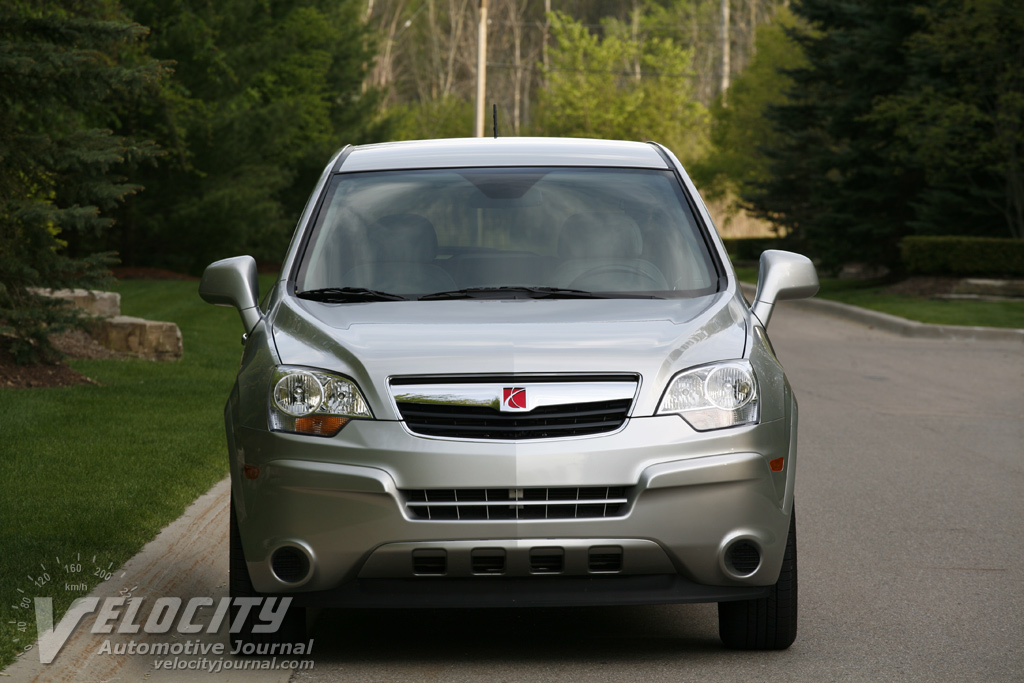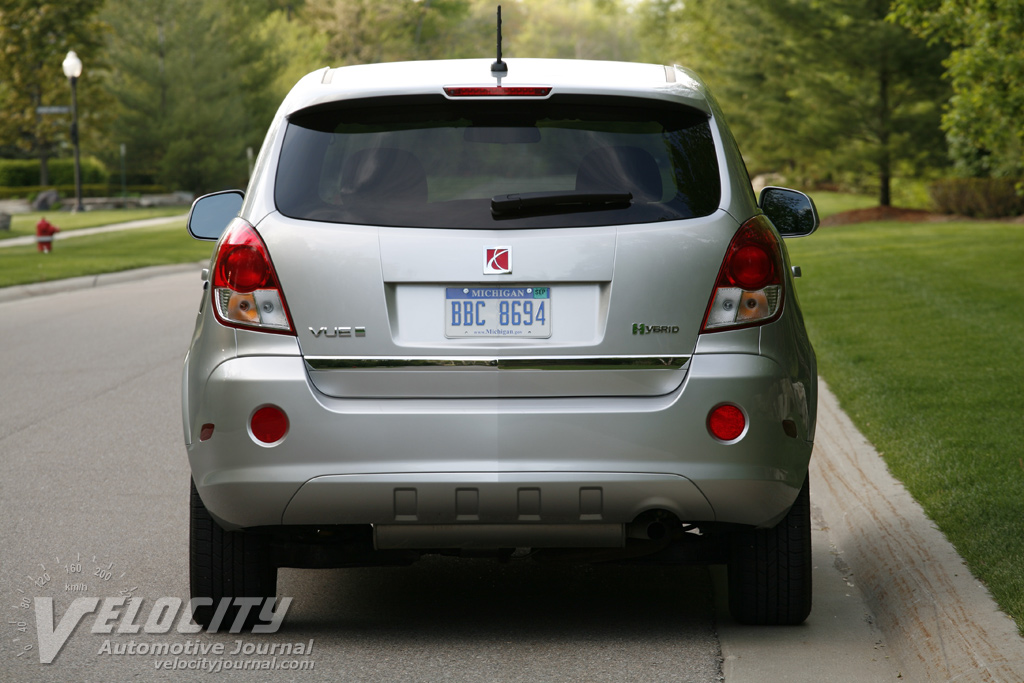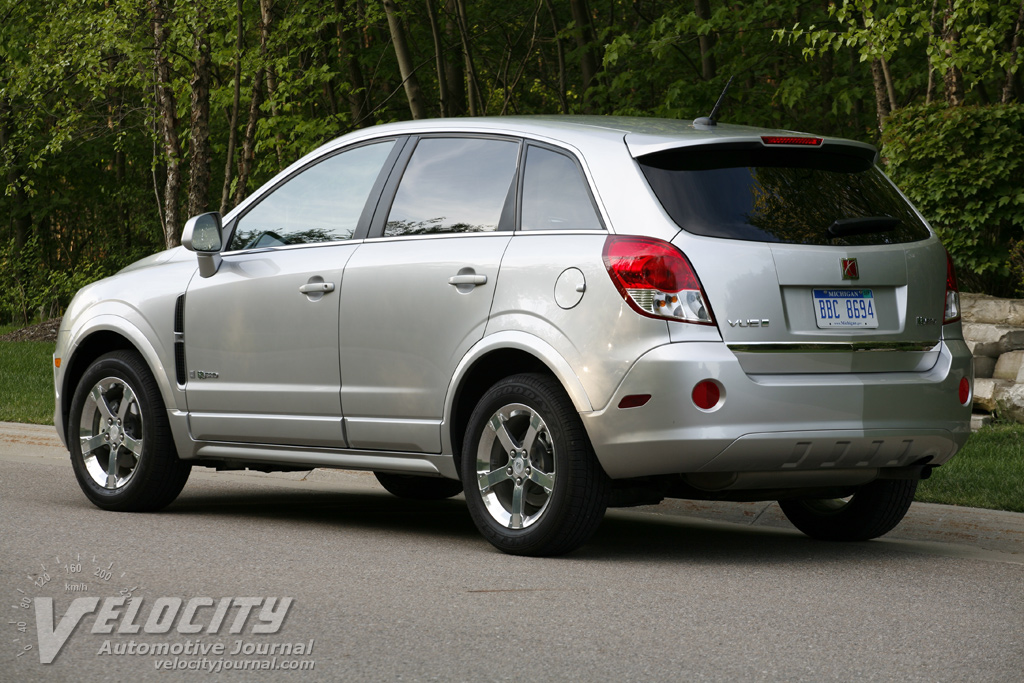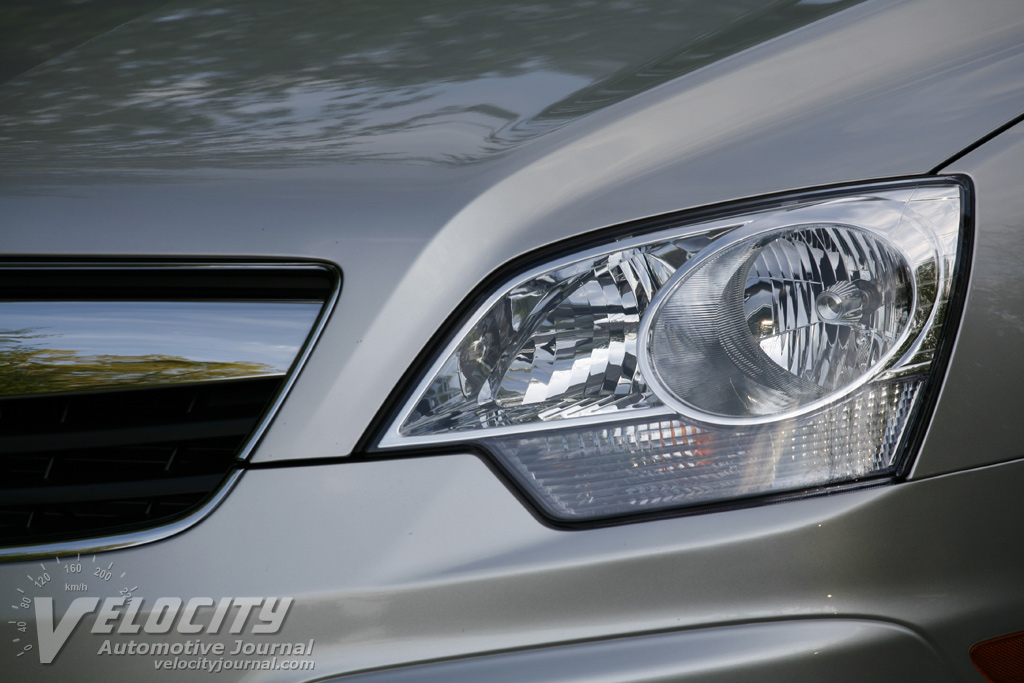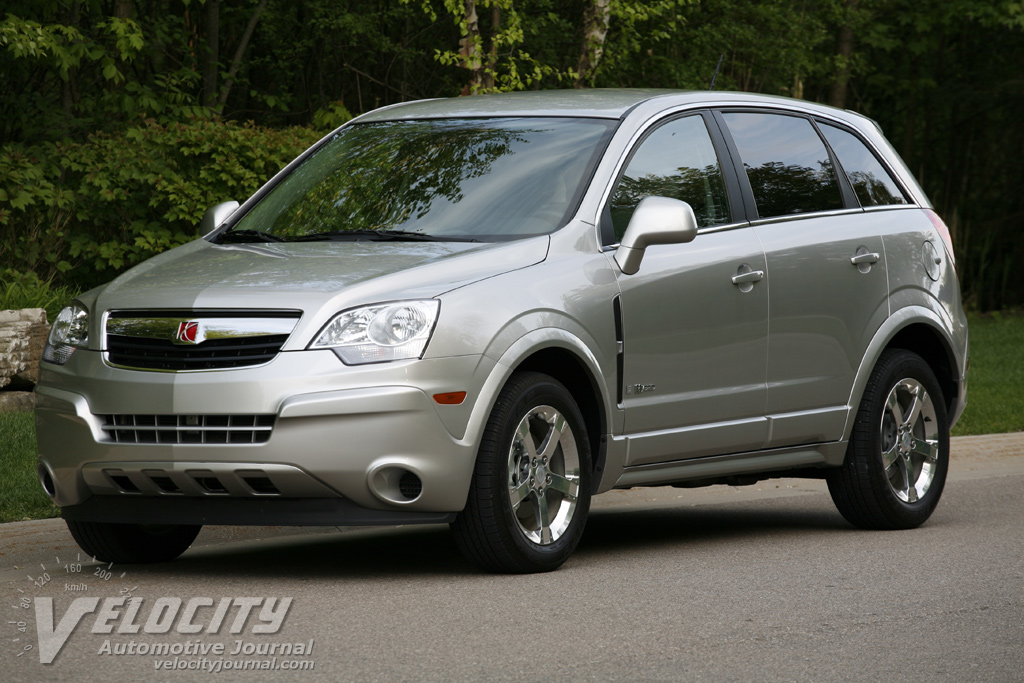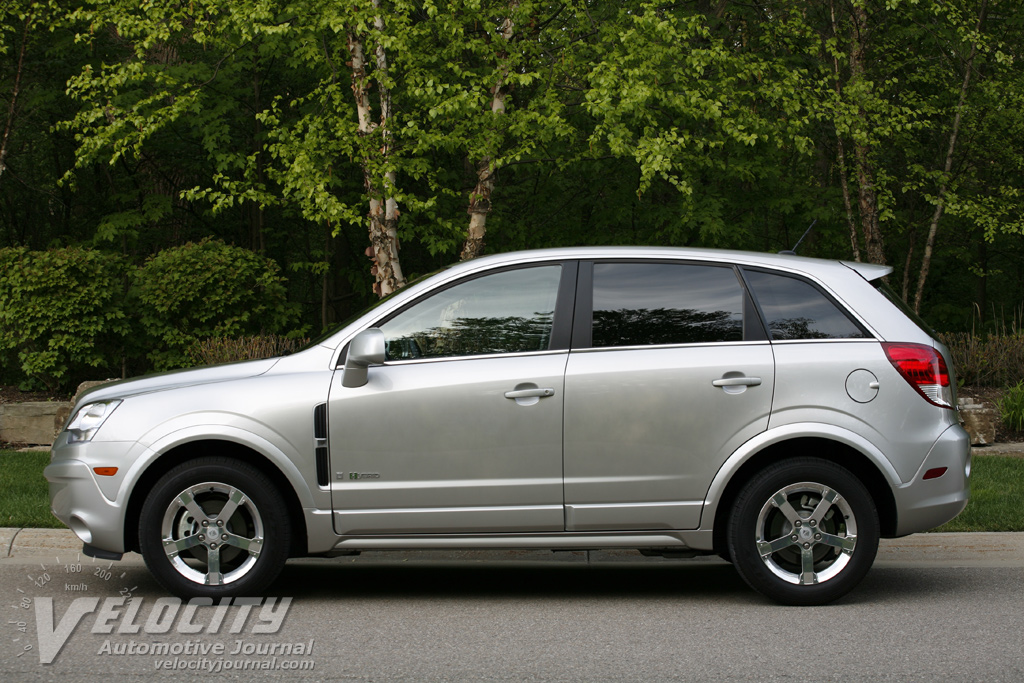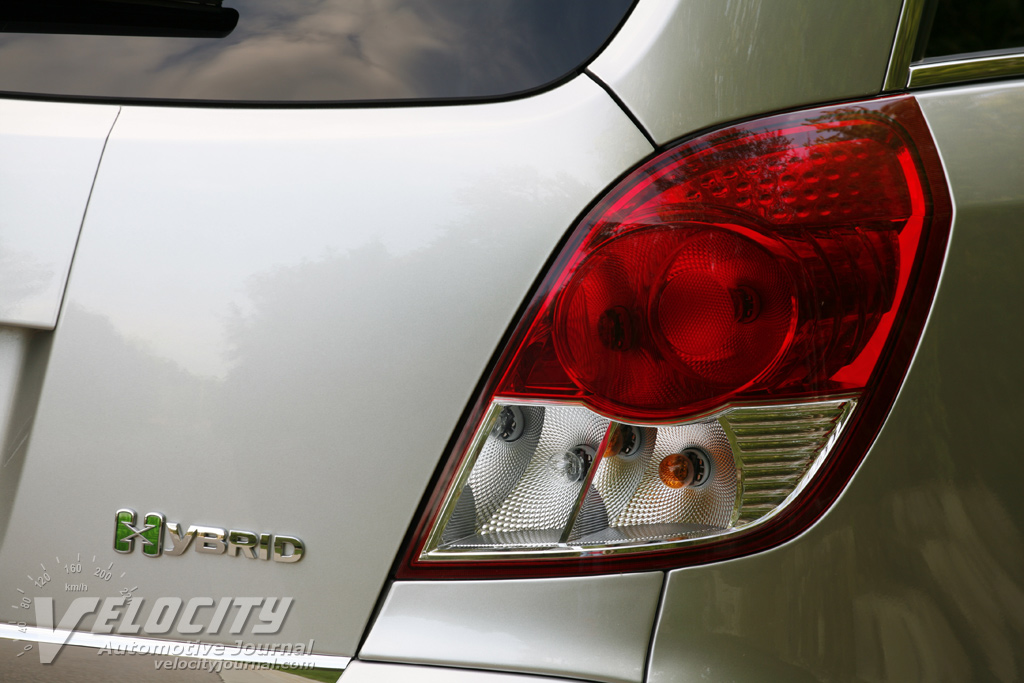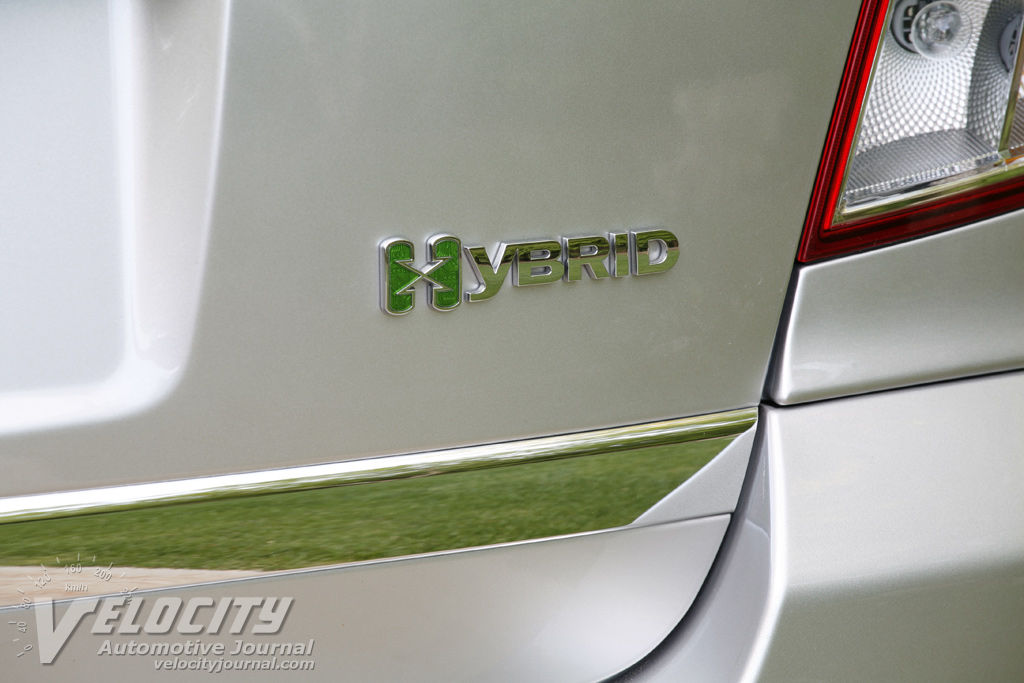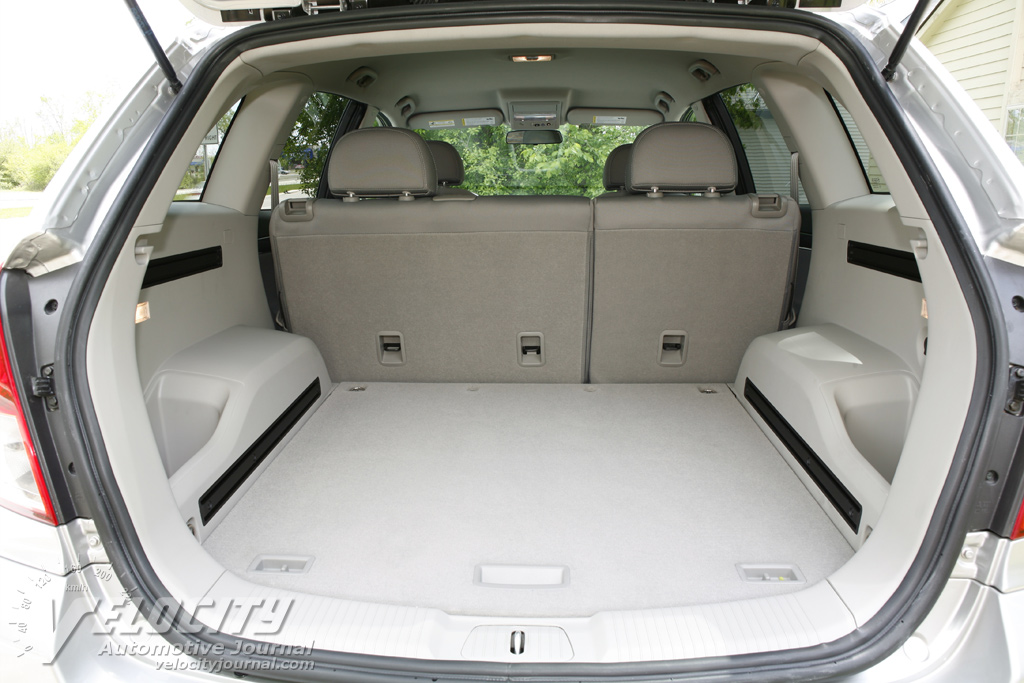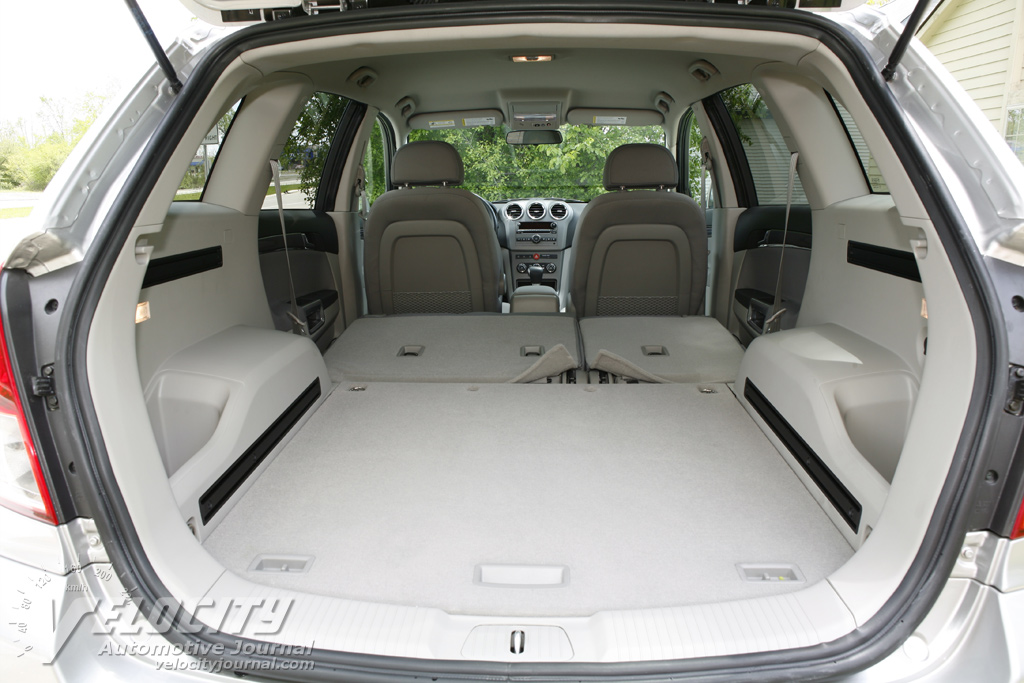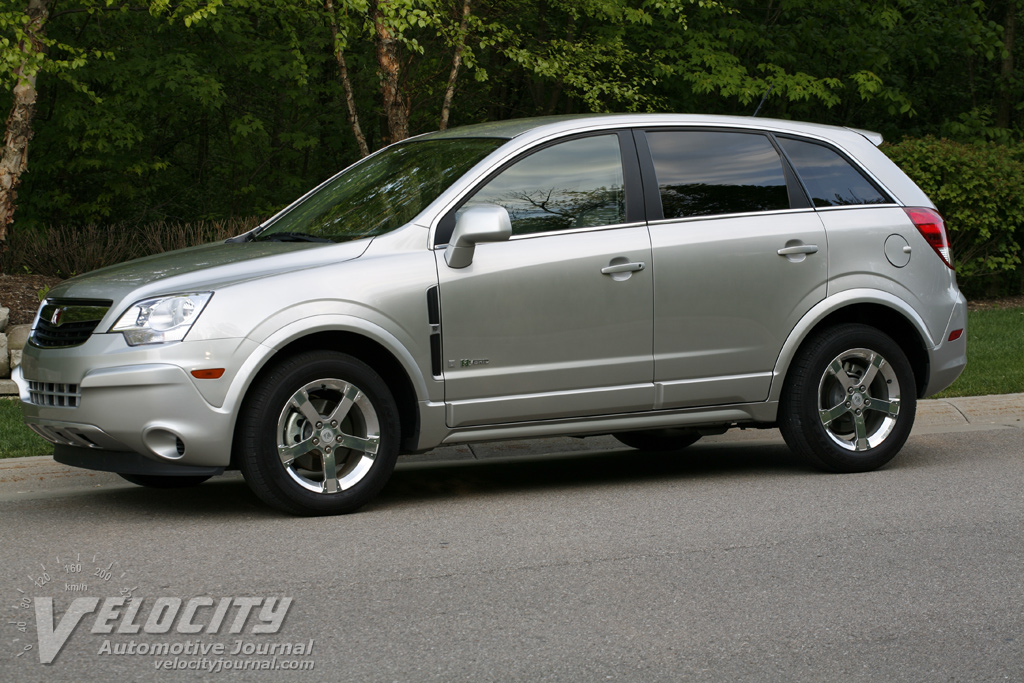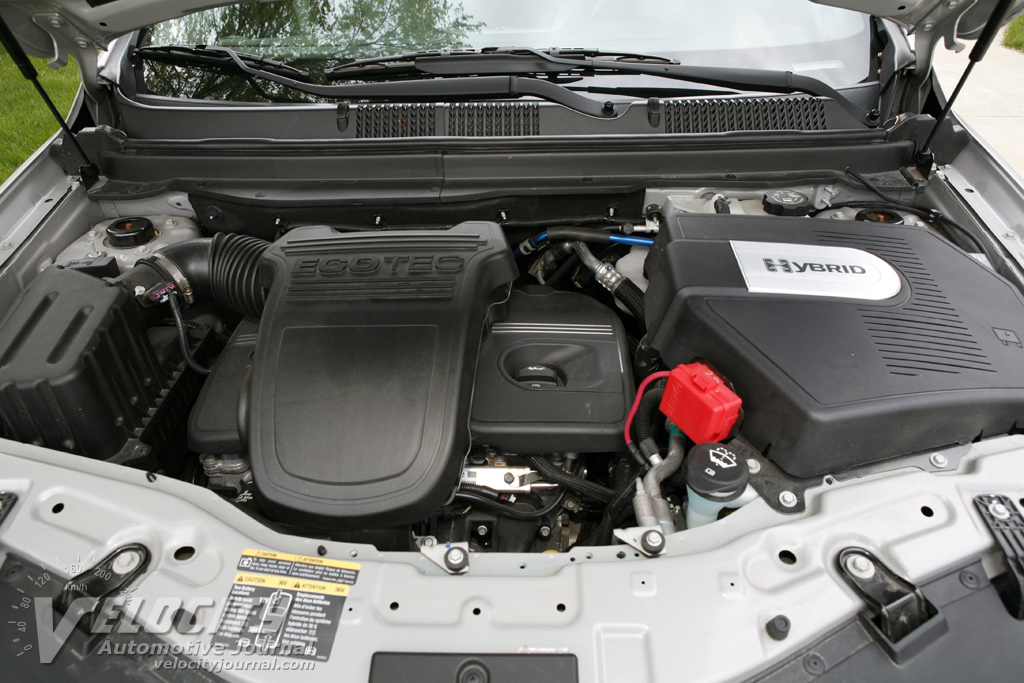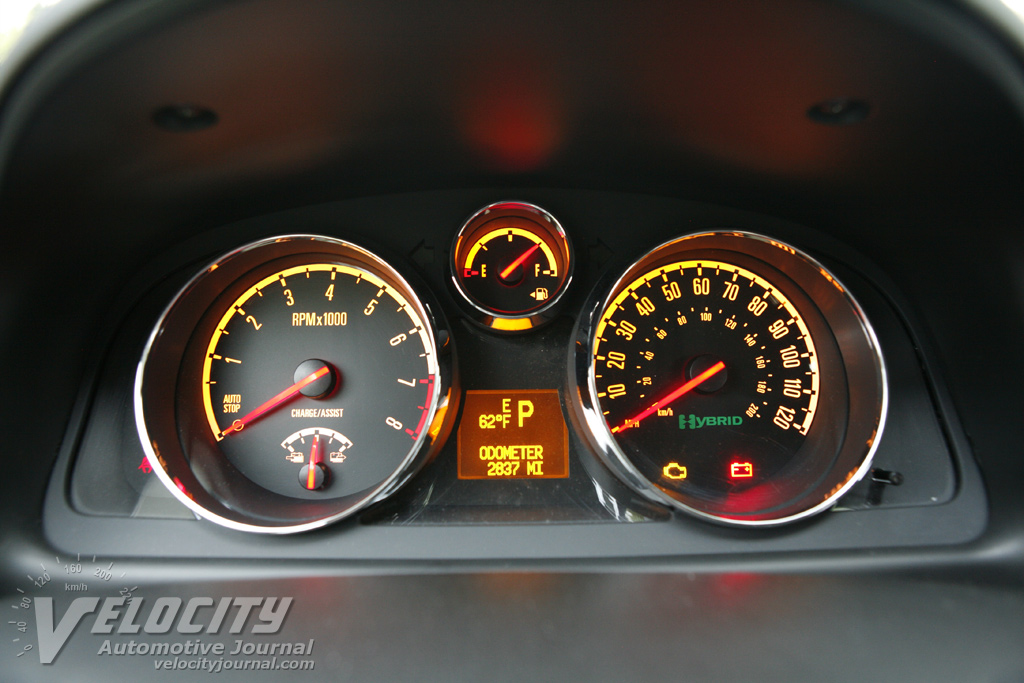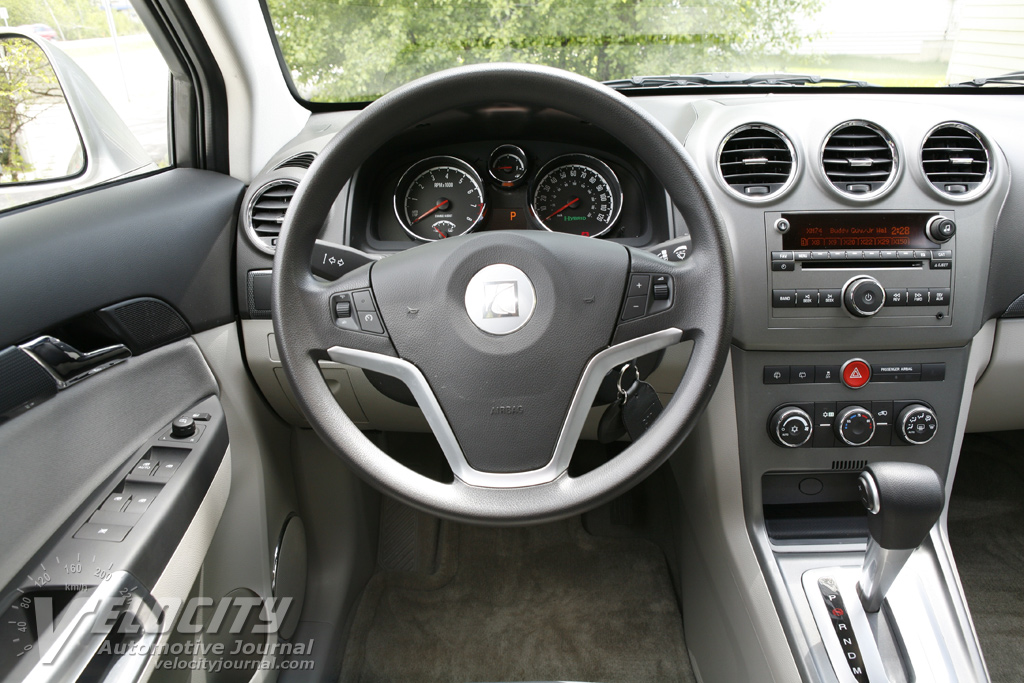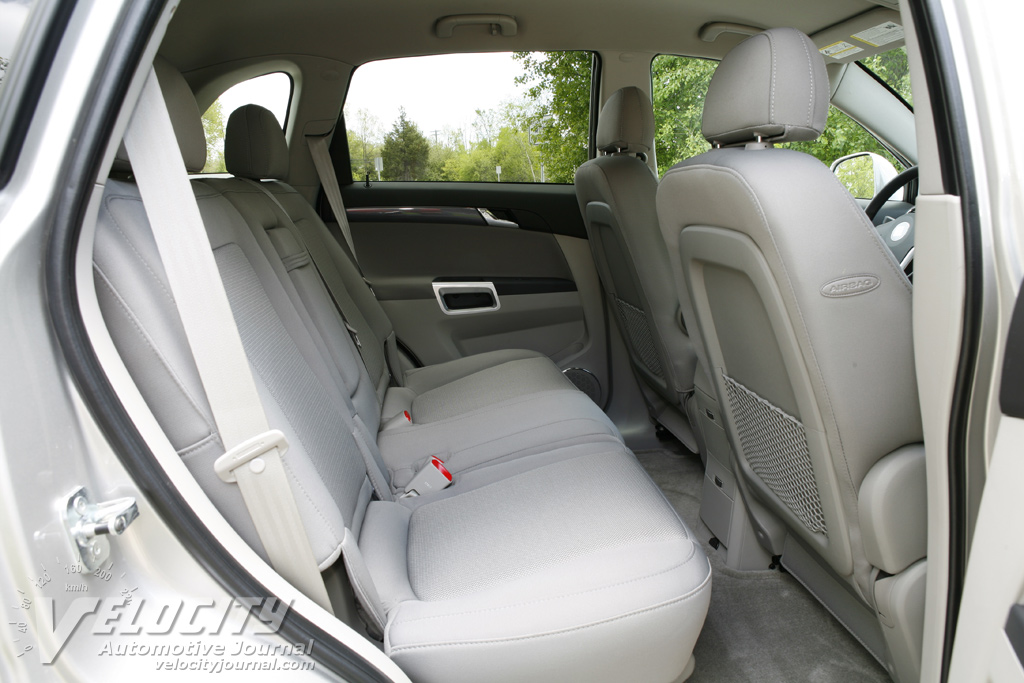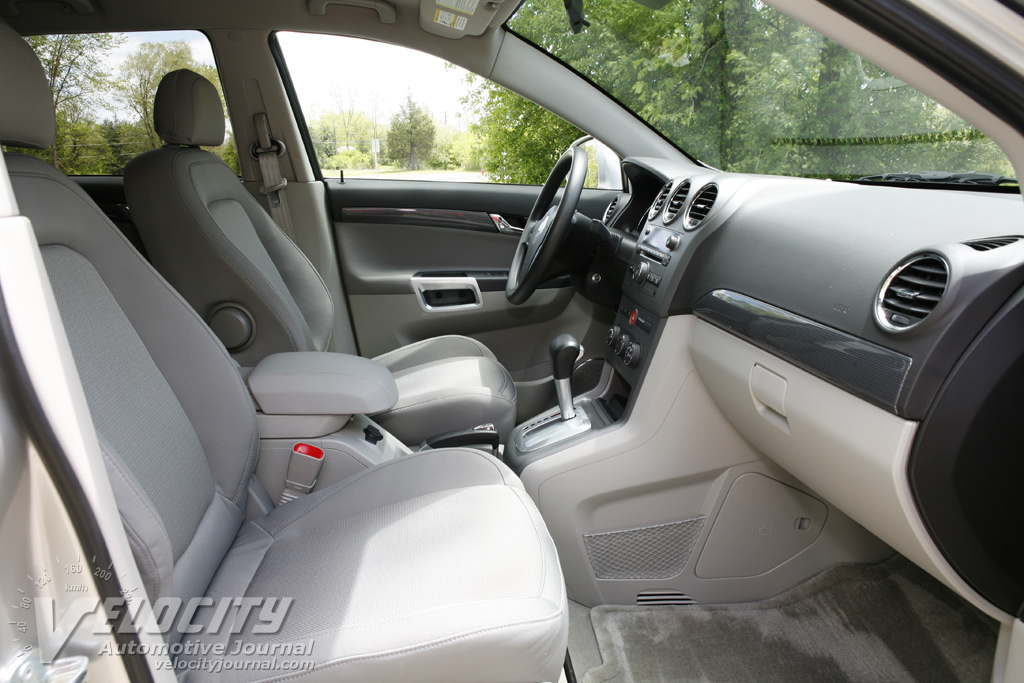2008 Saturn Vue Green Line FWD Hybrid
05/19/2008
Shahed Hussain
When Saturn introduced the first-generation Vue, it didn't steal many sales from the dominant Ford Escape, Honda CR-V, and Toyota RAV4. For its second attempt at the compact SUV segment, GM assigned its subsidiary Opel to develop the platform shared by the Vue and its European cousin, the Antara. The German design influence transformed the Vue from a mediocre contender into a genuine alternative to more popular compact SUVs.
Like most other small SUVs, the 5-passenger Vue is available with a FWD or AWD driveline. Engine choices include a 2.4L inline-4, as well as a 3.5L or 3.6L V-6 powerplants mated to 4-speed (inline-4) or 6-speed (V-6) automatics. AWD Vue models are only offered with the 3.5L or 3.6L engines. GM offers two hybrid versions of the Vue (FWD only): the Vue Green Line and the newly introduced 2 Mode Hybrid (2009 model). We tested a 2008 Vue Green Line, which adds an electric motor/generator and battery pack to the 2.4L 4-cylinder engine. The hybrid system uses the electric motor to boost acceleration and turns off the gasoline engine at idle to save fuel. When slowing down, regenerative braking captures energy to recharge the battery pack. GM classifies the Vue Green Line as a mild hybrid, because it cannot run in fully electric mode.
Among hybrid SUVs, the Saturn Vue Green Line has only one direct competitor: the Ford Escape Hybrid. While the Ford gets better city fuel economy: 34 MPG (Escape) vs. 25 MPG (Vue), the Vue bests the Escape on the highway: 32 MPG (Vue) vs. 30 MPG (Escape). Pricing is comparable, as the Escape Hybrid starts at $26,945 vs. $26,270 for the Vue. Customers doing primarily urban driving may prefer the Escape, while highway commuters might lean towards the Vue. From a fuel savings perspective, consider the payback of the Vue Green Line compared to a $22,150 Vue XE: the over $4,000 premium for the Vue Green Line can buy a lot of gasoline, so many budget-conscious buyers will likely opt for the lower monthly payments of the base Vue XE.
Our tested Vue Green Line had a base price of $24,170 and no options; the total sticker price was $24,795, including $625 destination charge. Saturn has raised the base price of the Vue Green Line to $26,270 as of June 2008. The optional Premium Trim Package ($1,075) replaces the standard cloth upholstery with leather, and includes heated front seats. An available Comfort & Convenience Package ($925) adds an 8-way power driver's seat, leather-wrapped steering wheel, heated exterior mirrors, and a universal garage door opener.
In contrast to the inexpensive-looking interior of its predecessor, the second-generation Vue offers richer materials, tight panel gaps, and an uncluttered, attractive design. The front seats are firmly padded, but lack adequate thigh support. Rear passenger accommodations are best suited for two occupants, as the center position is poorly contoured for long distance comfort. Headroom is ample for 6'+ passengers in both front and back seats. Rear passengers also benefit from above average legroom, with a completely flat footwell. The 60/40 split rear seats fold down to accommodate 56.4 cu. ft. of cargo, or 29.2 cu. ft. with the seats upright. Storage options include dual bins under the center console armrest, a small bin in the rear center armrest, and a hidden compartment under the cargo area. Two 12V power outlets are available; both are near the center console.
Gauges consist of an 8,000 RPM tachometer and 120-MPH speedometer, with a smaller fuel gauge in between. The driver information display shows the odometer, outside temperature, compass direction, and the transmission mode. A charge/boost gauge (and an "ECO" light on the instrument panel) indicates battery and electric motor assist status. Surprisingly, Saturn neglected to include a coolant temperature gauge. Audio and cruise control buttons are conveniently mounted on the steering wheel. Knobs for the HVAC settings are located on the center stack below the audio system controls.
All Vue models share the same suspension setup, which consists of struts, coil springs, and a 26 mm diameter stabilizer bar (front), and trailing arms, lateral links, coil springs, and a 20 mm diameter stabilizer bar (rear). Each Vue model gets unique coil spring tuning to achieve desired ride and handling criteria. To reduce fuel consumption, GM selected low rolling resistance Goodyear Integrity P225/60R17 M+S tires for the Vue Green Line. Unfortunately, the Goodyears roar and thump excessively over concrete-surfaced roads, although they are less objectionable on asphalt surfaces. Brakes consist of 11.7"/11.9" diameter vented discs (front/rear); ABS and StabiliTrak stability control are standard. Pedal feel was disappointingly spongy, but the brakes were adequate for normal driving conditions.
With its focus on fuel economy, the Green Line Hybrid doesn't have any sporting pretensions. Slow turn-in response, numb steering, as well as moderate understeer and body roll result in safe, but unexciting handling characteristics. With its vague on-center steering feel, the Vue wanders slightly on the highway. However, the ride and handling engineers did manage to nearly eliminate torque steer from the front-wheel drive powertrain. Firm suspension damping keeps body motions in check, but at the expense of a jiggly ride over bumpy roads. However, due to the Vue's short wheelbase and elevated ride height, the suspension is less successful in reducing squat and dive during hard acceleration and braking.
Vue models equipped with the 2.4L Ecotec engine are coupled to the Hydra-Matic 4T45 4-speed automatic. A rocker button on the shift lever allows the driver full manual control of the transmission. While the 4T45 is undoubtedly less expensive than the 6-speed 6T70 (V-6 only), the wide ratio spread causes the engine to fall out of its powerband. We doubt that potential customers will be overly concerned, as the Vue Green Line is rated at 25/32 MPG (city/hwy.), compared to 19/26 MPG (city/hwy.) for the non-hybrid 2.4L Vue XE.
While some hybrid powertrains are associated with mediocre power, the Vue Green Line isn't one of them. GM tunes the powertrain for marginally higher output than in non-hybrid models: 172-bhp @ 6500 RPM and 167 lb.-ft. @ 4500 RPM. As with many large displacement 4-cylinder engines, the Ecotec 2.4L has a rough idle at startup. At full throttle, the inline-4 makes quite a racket, but becomes less objectionable below 4,000 RPM. GM doesn't specify the power output of the electric motor, but the powertrain control software seamlessly cuts in the motor as required. The only indication of motor assist is the charge/boost gauge needle, and the glowing green ECO light on the dashboard. To replenish the battery, regenerative braking turns the electric motor into a generator, which engages with a barely perceptible shudder. From a driver's perspective, the Vue Green Line clearly doesn't compromise performance relative to its conventionally powered sister models.
GM transformed the second generation Saturn Vue into a viable alternative to the popular Ford Escape, Honda CR-V and Toyota RAV4. While the non-hybrid Vue goes head-to-head with the Japanese and domestic compact SUVS, the Vue Green Line competes directly with the Escape Hybrid. Although current gasoline prices shorten the payback period for a hybrid SUV, ultimately, this Saturn is as much an environmental statement as it is about reduced fuel consumption. For customers interested in both, the Vue Green Line is worth considering.

